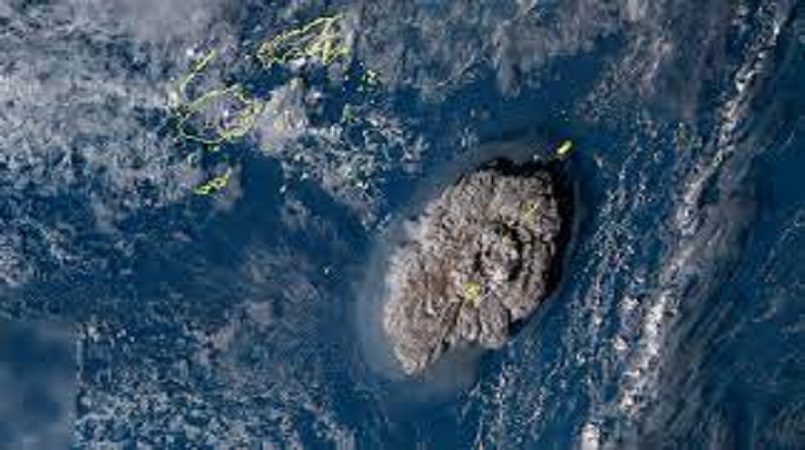
Last year's devastating volcanic eruption near Tonga "triggered the fastest underwater flow ever recorded" in what Kiwi scientists say was an "astonishing event".
New analysis produced by scientists from around the world, including NIWA, indicates the flows travelled up to 122km/h — up to 50% faster than any other recorded.
The eruption of Hunga-Tonga Hunga-Ha'apai and the ensuing tsunami killed four people in Tonga after becoming the largest atmospheric explosion recorded by modern instruments.
Scientists say that material from the volcanic eruption collapsed into the ocean, triggering a huge surge of rock, ash, and gas that caused extensive damage to Tonga's underwater telecommunication cables some 80km away.
NIWA scientist Emily Lane, co-author of the new paper, said the timings and locations of the damage to two subsea cables allowed them to determine the speeds of flows.
Last year's eruption and ensuing tsunami severed Tonga's only international cable in two places and effectively plunged the country into a communications blackout.
Lane said: "What's impressive is that Tonga's international cable lies in a seafloor valley south of the volcano, meaning the flow had enough power to go uphill over huge ridges, and then back down again.
"Surveys showed that Tonga's domestic cable was buried under 30 metres of material, which we sampled and confirmed as containing deposits formed by a powerful seafloor flow triggered by the eruption."
Tongans living in New Zealand were cut off from family in the island kingdom for weeks after the disaster, as engineers struggled to reconnect Tonga with the rest of the world.
Earlier research results showed the eruption of Hunga-Tonga Hunga-Ha'apai remobilised a "staggering" 10cu kilometres of material from the seafloor, according to NIWA.
This new analysis was made possible by the NIWA-Nippon Foundation Tonga Eruption Seabed Mapping Project.
Voyage leader and marine geologist Kevin Mackay said the new findings were "just another record ticked off the list for this astonishing event".
"The seafloor flows were one of the big unknowns from this eruption — with it being an underwater volcano, it's something you rarely get to study just after the fact," he said.
